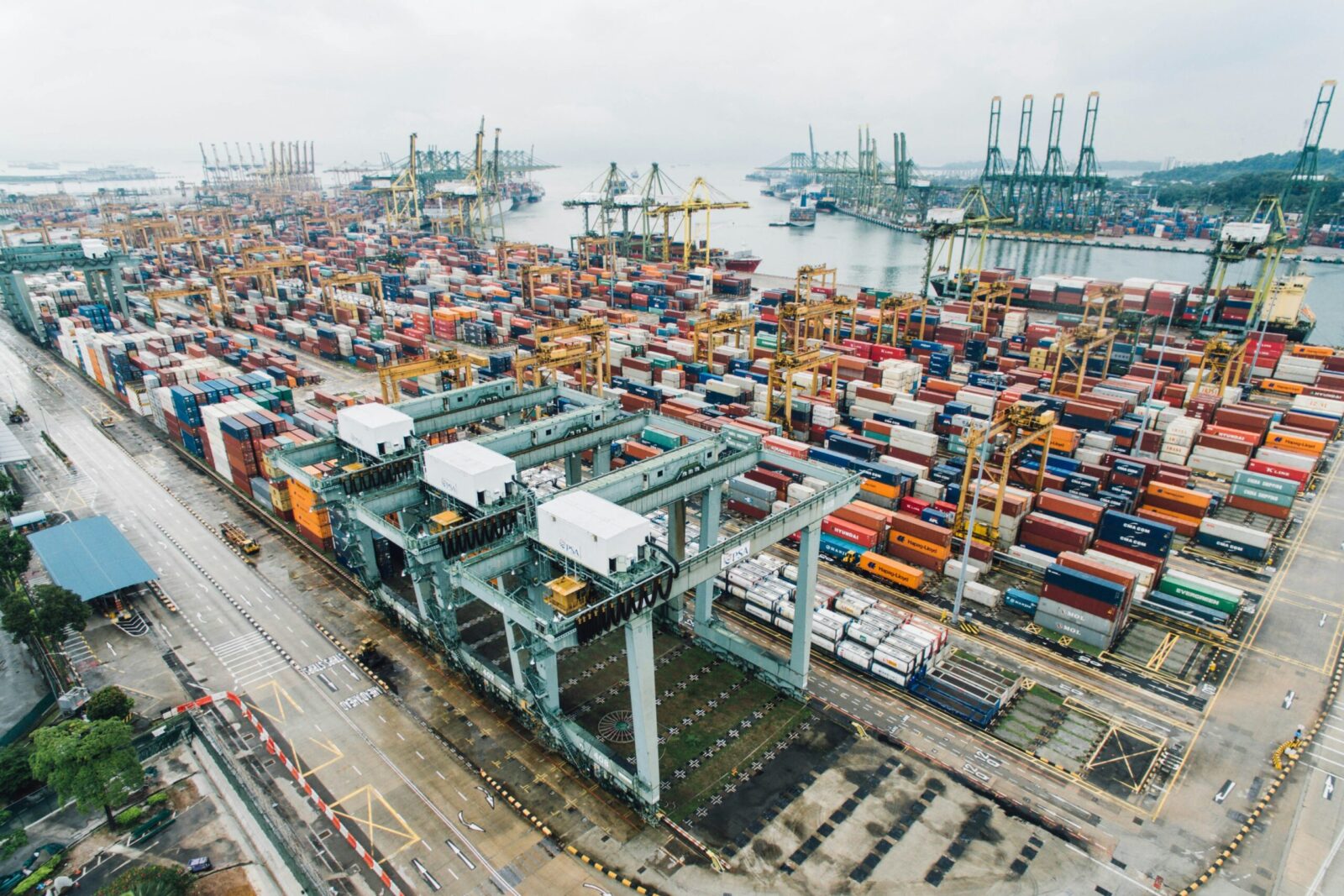
How to Optimize Supply Chain Management?
Introduction Today’s complex and turbulent business environment requires effective supply chain risk management. As global supply networks become more intertwined,...

Get 20€ off on your first order!
Supply chain management (often abbreviated to SCM) can be defined as the process that oversees the entire product lifecycle, from raw materials and supplies acquisition to delivering the finished product to customers.
SCM aims to enhance efficiency, reduce costs, and guarantee timely delivery while maintaining product quality. Plus, it coordinates and integrates all vital activities and stakeholders, including suppliers, manufacturers, distributors, retailers, and customers.
Key aspects of supply chain management include sourcing and procurement (ensuring a cost-effective and reliable supply of materials), production and manufacturing (planning, scheduling, and quality control), inventory management (balancing availability and holding costs), logistics and transportation (moving goods cost-effectively), demand and sales planning (aligning production and distribution to customer expectations), and customer service (fostering strong relationships and repeat business).
Supply chain management is often touted as the backbone of modern business, as it ensures the smooth flow of goods and services from production to consumption.
But what does supply chain management mean, and how can you master this crucial process for your business?
In this article, we’ll delve into the world of supply chain management, explore the benefits of sustainable and digital practices, and provide concrete examples to help you master your supply chain operations.
These are the topics we will cover:

At its core, supply chain management refers to the coordination and management of the entire process of producing and delivering goods or services. This includes activities such as procurement, production, transportation, warehousing, and distribution. Effective supply chain management ensures that products reach customers in a timely, cost-effective manner while maintaining high quality and ethical standards.
An efficient supply chain management process involves coordinating all aspects of the supply chain, which can be broken down into five main parts:
Effective SCM starts with planning to align supply with customer and production demands. Businesses must anticipate their future needs, considering raw materials, supplies, equipment capacity, and staffing requirements.
Sourcing involves acquiring raw materials and supplies necessary for production. One way of ensuring efficient sourcing is to expand your pool of suppliers to include a wider range of options (for instance, Droppe’s industrial marketplace features over 100 trusted European suppliers). This will help you source better raw materials and supplies that meet the required manufacturing specifications, ensure prices are competitive, acquire emergency materials in case of unforeseen events, and evaluate more suppliers based on the best product fit for your business.
In this central part of SCM, raw materials are transformed into final products. The manufacturing process can be divided into sub-tasks such as assembly, testing, inspection, and packaging. Companies should monitor factors like waste or inefficiencies and address any issues that arise.
After products are manufactured and sales finalized, they must be delivered to customers. Strong SCM processes have robust logistic capabilities and delivery channels to ensure timely, safe, and cost-effective product delivery. Companies should also have backup or diversified distribution methods to account for potential disruptions.
The SCM process ends with product support and customer returns, often referred to as reverse logistics. Companies must have the capability to receive returned products and process refunds. Addressing the root causes of customer returns, such as defective or expired products, is essential to avoid future issues and ensure a successful SCM process.

Efficient supply chain management systems help with risk management, decreasing costs, eliminating waste, and shortening production time.
Here’s a closer look at these benefits:
Logistics is a vital part of supply chain management, involving the planning, execution, and management of the effective flow and storage of goods, services, and related information. This process covers transportation, warehousing, and inventory management.
For example, a well-coordinated transportation network can reduce delivery times and lower transportation costs, while efficient warehousing ensures that products are stored safely and can be easily accessed when needed. Moreover, effective inventory management prevents stockouts and excess inventory, maintaining a balance that meets customer demand.
Ultimately, logistics helps ensure that the right products are in the right place at the right time, facilitating a smooth flow throughout the entire supply chain.
Procurement involves acquiring the necessary goods and services for a business to operate efficiently. Within supply chain management, procurement encompasses securing raw materials, indirect supplies, components, or completed products from suppliers, negotiating agreements, and guaranteeing punctual delivery. Efficient procurement and supply chain management are closely linked, as robust supplier relationships can result in reduced expenses, shortened lead times, and enhanced product quality.

Sustainable supply chain management involves incorporating eco-friendly and socially responsible practices across all stages of the supply chain process. This includes minimizing waste, saving energy, supporting fair working conditions, and ensuring ethical procurement.
Adopting green logistics and sustainable supply chain management is not only advantageous for the environment and society but can also provide your business with a competitive edge, as consumer preferences shift towards environmentally friendly and ethically made products.
For example, you could reduce waste by optimizing packaging materials and using recyclable or biodegradable options to minimize their environmental impact. Additionally, you could conserve energy by implementing energy-efficient equipment and processes in your manufacturing facilities or by using renewable energy sources.
In terms of fair labour practices, you can ensure that your suppliers maintain safe working conditions, pay fair wages, and prohibit child or forced labour. Moreover, ethical sourcing is another essential aspect of sustainable supply chain management. You can commit to procuring raw materials from suppliers who follow sustainable practices, such as using organic or sustainably harvested materials, or who adhere to fair trade standards. This approach not only supports the environment but also helps improve the livelihoods of people involved in the production process.
The digital supply chain encompasses the application of cutting-edge technologies like the Internet of Things (IoT), artificial intelligence (AI), and blockchain to refine and augment supply chain functions.
These technological advancements can bolster forecasting accuracy, optimize transport routes, facilitate real-time monitoring, and boost transparency throughout the entire supply chain. By adopting digitalization, you can cut expenses, enhance efficiency, and swiftly adapt to market changes.
For instance, businesses can use AI-driven demand forecasting tools to better predict sales trends, allowing them to adjust production levels accordingly and avoid excess inventory or stockouts. Additionally, IoT devices, such as GPS trackers and sensors, can be used to monitor the location and condition of goods in transit, enabling you to make data-driven decisions and improve overall logistics efficiency.

All in all, to master supply chain management, you must adopt a holistic approach that considers every aspect of the process.
Key strategies include:
In today’s fast-paced and increasingly connected world, supply chain management is more crucial than ever.
By understanding what supply chain management is and embracing innovations such as sustainable practices and digital technologies, you can revolutionise your operations, reduce costs, and stay ahead of the competition.
Remember, the key to mastering supply chain management lies in adopting a strategic, holistic approach that integrates every aspect of the process, from procurement to delivery. As you strive to improve your supply chain operations, consider how the examples and strategies discussed in this guide can be adapted to your unique business needs.

Thank you! You've signed up for our newsletter.



















Introduction Today’s complex and turbulent business environment requires effective supply chain risk management. As global supply networks become more intertwined,...

Lean logistics applies lean management to supply chain performance. Lean Logistics eliminates non-value-added procedures to improve commodity flow and cut...

Introduction Rapid technical breakthroughs and changing market conditions are shaping supply chain management. Businesses must adapt to these changes to...

Introduction Today’s complex and turbulent business environment requires effective supply chain risk management. As global supply networks become more intertwined,...

Lean logistics applies lean management to supply chain performance. Lean Logistics eliminates non-value-added procedures to improve commodity flow and cut...

Introduction Rapid technical breakthroughs and changing market conditions are shaping supply chain management. Businesses must adapt to these changes to...
Get 20€ off on your first order!
Save 30% by buying directly from brands, and get an extra 10€ off orders over €100
Save 30% by buying directly form brands, and get an extra 10€ off orders over €100